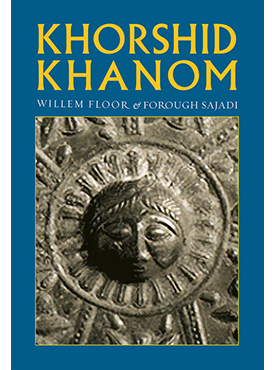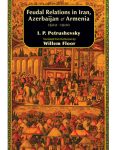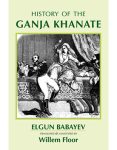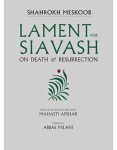About the Book
Originally, Khorshid Khanom or “Sun Lady,” was the symbol of the Mother Goddess, but later she became the goddess of fertility and water, and the protector of her believers. Since Achaemenid times and thereafter, she was the personification of Anahita, who was immaculate and fiery, and associated with fertility, water, and Venus.
Despite Khorshid Khanom’s ubiquitous presence in Iran and beyond, she seems to be totally absent from primary sources, secondary historical monographs, encyclopedias, and even from folklore literature, except for lullabies and children’s ditties.
Khorshid Khanom: A Study in the Origin and Development of the Shir-o Khorshid Motif, by renowned scholar Willem Floor in collaboration with art historian Forough Sajadi, fills this lacuna. It draws from folklore, literary and artistic sources to explore the inspirational source of the motif. It identifies the first surviving artworks depicting a human-faced sun, and discusses how this motif developed and was used over the centuries, not only to represent fertility, but also as the symbol of royal power and charisma from the pre-Islamic period down to the twentieth century.
About the Author
Willem Floor studied development economics and non-western sociology, as well as Persian, Arabic and Islamology from 1963-67 at the University of Utrecht (the Netherlands). He received his doctoral degree from the University of Leiden in 1971. Since 1983, Dr. Floor was employed by the World Bank as an energy specialist, however, after his retirement in 2002, he has dedicated his time to the study of the social and political history of Iran, and has published extensively throughout this time. His books include: Public Health in Qajar Iran, Agriculture in Qajar Iran, and The History of Theater in Iran, as well as, The Persian Gulf: A Political and Economic History of 5 Port Cities, 1500-1730, its second volume, Persian Gulf: The Rise of the Gulf Arabs, 1747-1792, third volume, The Rise and Fall of Bandar-e Lengeh, the fourth volume, Bandar Abbas: The Natural Gateway of Southeast Iran, and the fifth volume, The Persian Gulf: Links with the Hinterland Bushehr, Borazjan, Kazerun, Banu Ka’b, & Bandar Abbas, The Persian Gulf: The Hula Arabs of The Shibkuh Coast of Iran, and The Persian Gulf: Dutch-Omani Relations A Commercial & Political History 1651-1806, and The Persian Gulf: Muscat – City, Society and Trade . He has also published, Travels Through Northern Persia, 1770-1774, Titles and Emoluments in Safavid Iran, and A Social History of Sexual Relations in Iran; Labor and Industry in Iran, 1850-1941; Guilds, Merchants and Ulama in 19th Century Iran; The Rise and Fall of Nader Shah; Games Persians Play, and History of Bread in Iran. His translations include: Samuel Gottlieb Gmelin’s Travels Through Northern Persia 1770–1774 , and with Hasan Javadi, Abbas Qoli Aqa Bakikhanov’s The Heavenly Rose-Garden: A History of Shirvan & Daghestan; Evliya Chelebi’s Travels in Iran and the Caucasus, 1647 and 1654; A Man of Two Worlds: Pedros Bedik in Iran, 1670–1675, Awake: A Moslem Woman’s Rare Memoir of Her Life and Partnership with the Editor of Molla Nasreddin, the Most Influential Satirical Journal of the Caucasus and Iran, 1907–1931, and Engelbert Kaempfer: Exotic Attractions in Persia, 1684–1688: Travels & Observations.
Forough Sajadi is an art historian specializing in Islamic art and, in particular Persian paintings. She earned her doctoral degree in Art History from the University of Warsaw. Since 2021 her research has focused on Persian miniatures in Dutch collections. She is currently working as a Scaliger Fellow in the Special Collections Department of Leiden University Libraries.








